The History and Legend of Sleepy Hollow
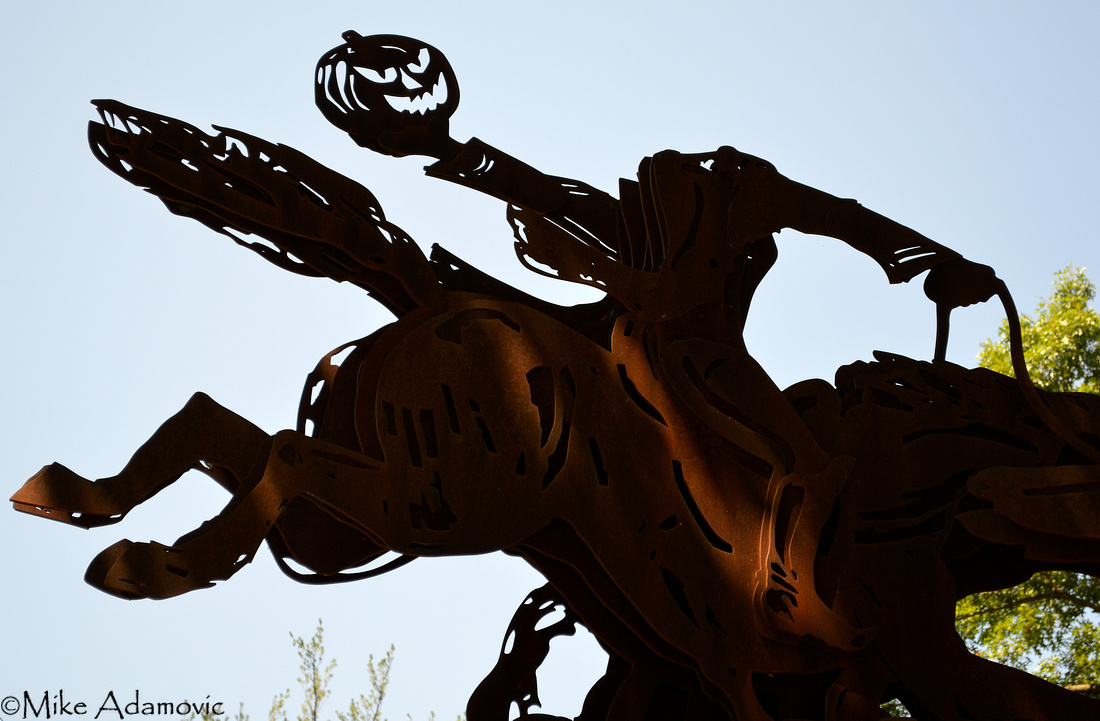

The Old Dutch Church of Sleepy Hollow and its accompanying burial ground made famous in Washington Irving’s iconic short story, The Legend of Sleepy Hollow, still hold the same rustic charm as when they were penned into his work almost two centuries ago. While the surrounding towns and cities have exploded in size and population, this historic site, along with many others detailed by Irving, have been preserved and only the closest inspection of the surroundings will reveal traces of the current century. As Irving noted in relation to the area, “while the great torrent of migration and improvement, which is making such incessant changes in other parts of this restless country, sweeps by… unobserved.” His description is still mostly accurate, at least when it comes to the “bewitched” and “haunted” land of the churchyard and its deeply forested environs.
The land on which the church now sits was utilized by the Dutch settlers as a cemetery perhaps as far back as 1645, although the earliest readable gravestone dates to 1755. Many of the first burials had wooden markers which have long since rotted away. The exact details of the construction of the church are somewhat nebulous. The undertaking most likely began around 1685, and by 1697, the structure was fully completed. It holds the special distinction of being the oldest extant church in New York State.
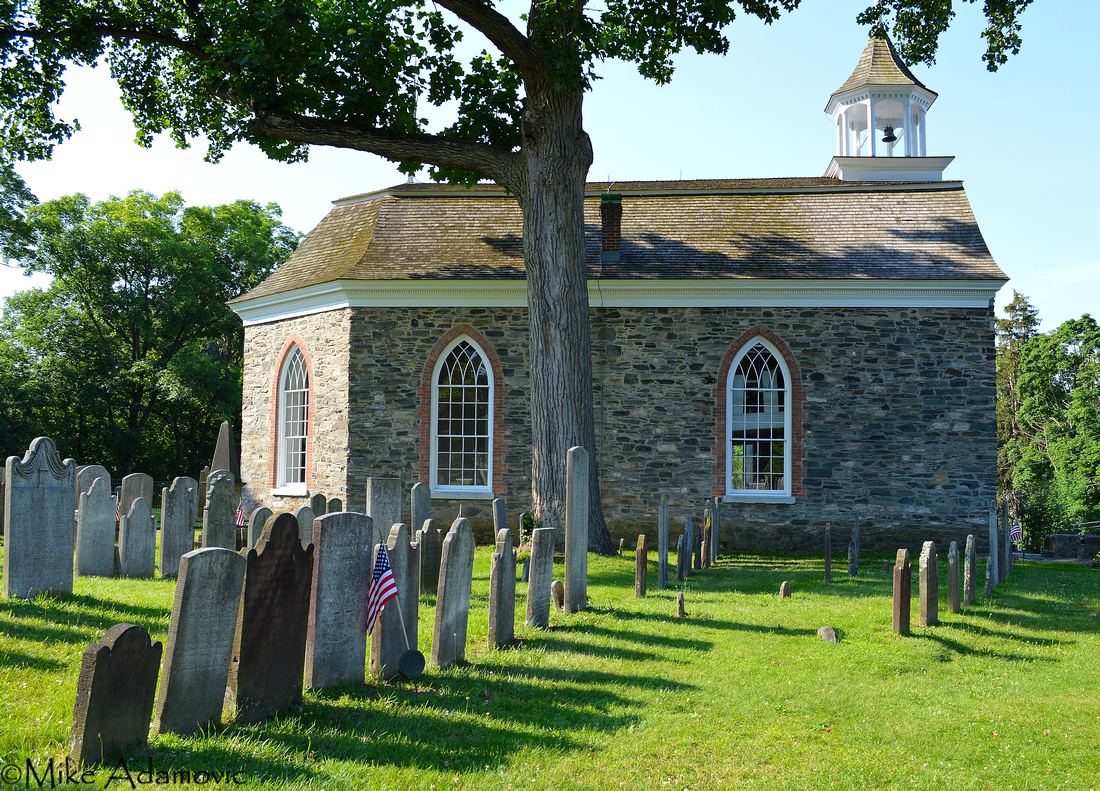

Frederick Philipse, a wealthy New Netherland landowner and merchant, is credited with the church’s creation, building it only a couple hundred yards away from a nearby mill he owned and operated. Philipse acquired a vast fortune during his lifetime and ranked as one of the wealthiest men in the province. A substantial portion of the land which now comprises southern Westchester was under his dominion, stretching from Spuyten Duyvil Creek in northern Manhattan to the Croton River. He managed to obtain most of this through a combination of advantageous marriages and his shrewd business acumen; first dabbling in selling household wares and then delving into the slave trade. Labor for the construction of Old Dutch Church was at least partially undertaken by slaves Philipse owned.
Lore dictates that during construction a powerful storm raged throughout the lower Hudson Valley causing the Pocantico River—the same on which Philipse’s mill was situated along—to grievously overflow its banks and damage the mill’s operations. Philipse pulled hands away from the erection of the church to repair the washed out dam, making it even stronger than before. Shortly thereafter, another flood ravaged the dam again, and work on the church was halted once more. One of the slaves eventually came forward and informed Philipse that night after night he had dreamt that God was displeased that the fixing of the dam took precedence over the construction of the house of worship. The slave informed him that once the church was completed all would be well and the dam would permanently hold. Finding the string of recurring floods unusual, he heeded the slave’s advice. A team was quickly dispatched to finish the church. After its completion, the Pocantico never again rose to a height high enough to cause any serious harm.
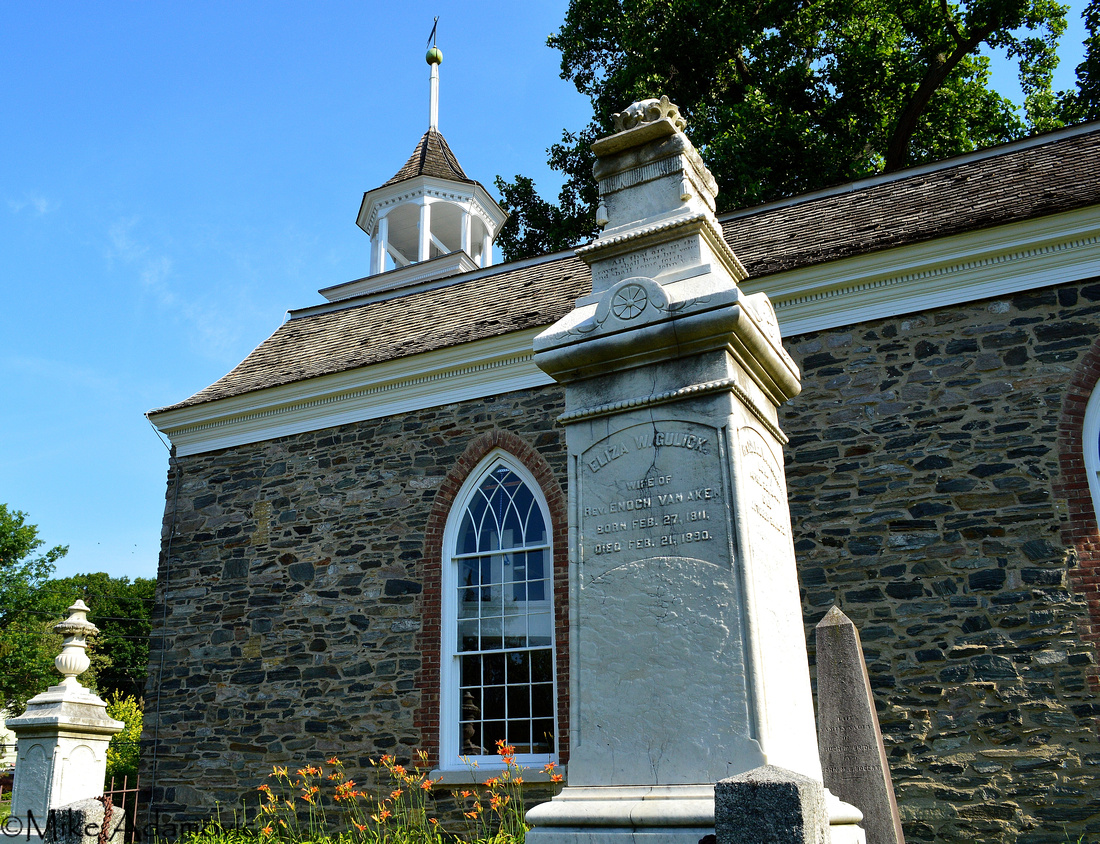

Apart from renovations in 1837, in which the entrance was moved from the south wall to the west, and rectangular box windows traded in for wide gothic arches, the church still holds the same charm it did throughout the colonial era. Many of the furnishings are original, or at the very least near identical reproductions, such as the preacher’s pulpit. The black oak and ebony inlay communion table produced in Holland during the 17th Century still graces the interior, willed to the church by Philipse’s wife upon her death. In the front of the church, beneath the table lies a crypt in which numerous members of the Philipse family repose. The bell in the steeple is also original. Cast in 1685, it bears, in Latin, the motto: “If God be for us, who can be against us?” Behind it, a patinaed copper weathervane incised with Frederick Philipse’s brand mark shows the motion of the wind. Despite resembling a museum to some extent, services are still held in the church to this day, though limited, occurring only throughout the summer and select holidays.
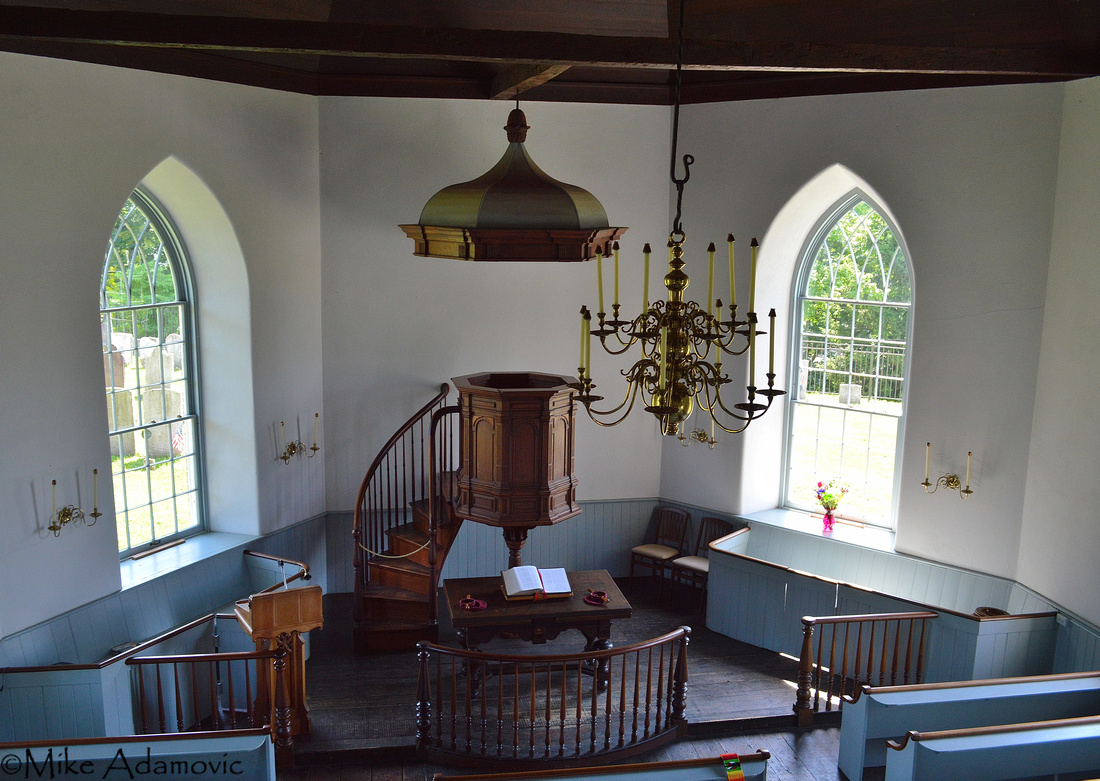

Washington Irving describes the scene in his Legend:
“It stands on a knoll, surrounded by locust-trees and lofty elms, from among which its decent whitewashed walls shine modestly forth, like Christian purity beaming through the shades of retirement. A gentle slope descends from it to a silver sheet of water, bordered by high trees, between which, peeps may be caught at the blue hills of the Hudson. To look upon its grass-grown yard, where the sunbeams seem to sleep so quietly, one would think that there at least the dead might rest in peace.”
The locusts and elms are long gone, though a massive and towering tulip tree now takes their place at the north end of the building.
From his eloquent description, and the fact that the churchyard played a prominent role in his famous tale, it’s apparent that Irving carved a special place in his heart for the history and lore laden grounds. It was documented, that in his later years, he was often caught wandering around the unkempt burial ground, then casually referred to the as “Old Yard.” “It was much neglected and rank with bushes and briars” up until the mid-1800’s, one source notes, “but Irving loved it even as it was, often loitering and musing on a summer’s day beneath the shade of large trees.”
He would eventually choose to have his own burial spot located only a short distance away from the church. On a low hill in the nearby and unaffiliated Sleepy Hollow Cemetery, he determined to have his final resting place situated next to a large oak tree that overlooked the sights he had immortalized through his writing. Today, this stately and umbrageous oak still remains, standing like a sentinel over Irving’s grave and family plot. A white marble tombstone of simple design marks the spot.
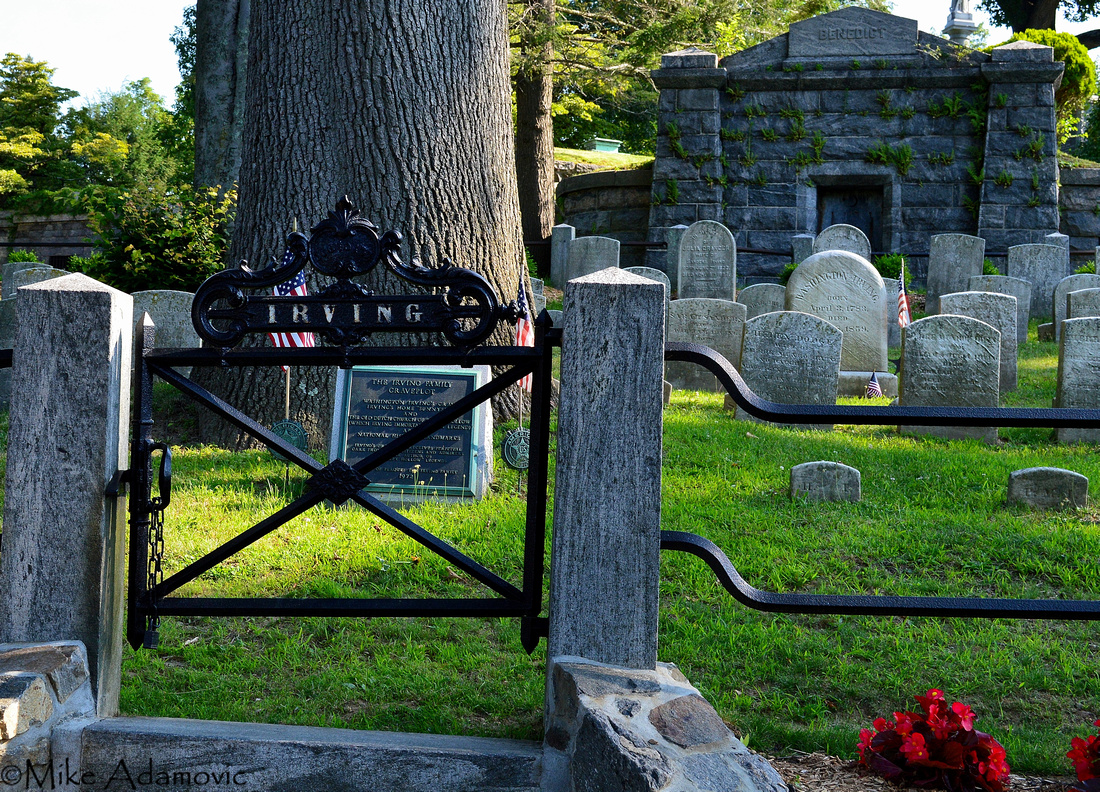

It’s worth the while to take a stroll through the Burying Ground. The stones are richly decorated on a level surpassing any contemporary design. Many of the older stones, especially those made out brownstone, are fancifully incised with whimsical shapes and figures. The ubiquitous plump-cheeked soul effigies adorning the tops are exceedingly well crafted, demonstrating the remarkable skill and craftsmanship of the artists. Due to a Dutch founding, several of the more ancient stones are inscribed in the native tongue of the first settlers. This, however, doesn’t take anything away from the scene. As the author of The Old Dutch Burying Ground of Sleepy Hollow notes, “its eleven surviving inscriptions in Dutch are eloquent even to those unable to read them.”
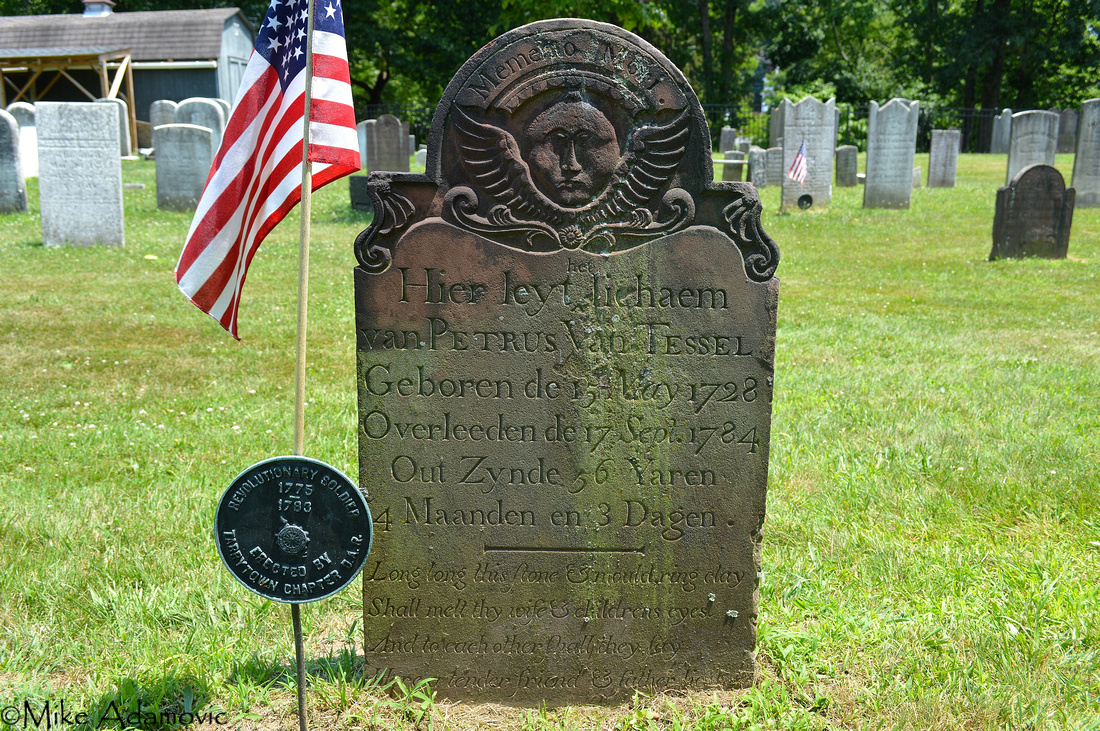

The epitaphs are intriguing, to say the least. Apart from listing name, birth and death dates, a significant percentage have brief poems at the base, most glorifying God, while some simply reminding the passer-by of our own mortality. One melancholy stanza reads:
Call and see as you pass by
As you are now so once was I
As I am now so you must be
Prepare for death and follow me.
Moreover, numerous stones are quite blunt, divulging intimate details about the death of the individual. In one instance the name of a murderer is applied to the stone of his victim; and in another, a short description makes mention of how a child just shy of her second birthday passed away “after a few hours severe, occasioned by her clothes taking fire.”


In mid-spring when the quick growing grass reveals the first traces of the greenery of the season, and the flowering trees strategically studded throughout the 2-acre yard expand their colorful and showy blossoms beside the gently murmuring Pocantico, one cannot help but truly admire the tranquility that emanates throughout. It takes little effort to understand how Irving came to be so enamored and bewitched by the place. Despite the depressing revelations made known by many of the gravestones, it’s impossible to be brought down, buoyed aloft by the surrounding beauty.


Irving incorporated two surnames located in the burying ground into his stories, though changing the spelling of both slightly. A handful of “Van Tessel” gravestones are located in the churchyard. Irving applied this name to the charming heiress Katrina, whom Ichabod Crane fruitlessly pursued. The other now well known name belongs to a “Van Winkel,” though only a single stone bore that surname. The whereabouts of the marker are unknown, it last having been documented in 1933, when a single rubbing was made of it.


Another famous landmark spans the brook near the base of the knoll which the church crowns. The Headless Horseman Bridge, the unfortunate location where poor Ichabod met an uncertain fate at the hands of the Horseman, draws crowds of curious visitors seeking to visit the spot “famous in goblin story” where, “according to rule,” the Galloping Hessian of the Hollow should vanish “in a flash of fire and brimstone” upon crossing. A NYS historical marker on the bridge denotes this as the place. However, the real bridge that’s mentioned in the story was actually situated slightly further upstream. It no longer exists. A replica of it can be seen 1/3 of a mile upstream from Route 9 in the interior of the Sleepy Hollow Cemetery.
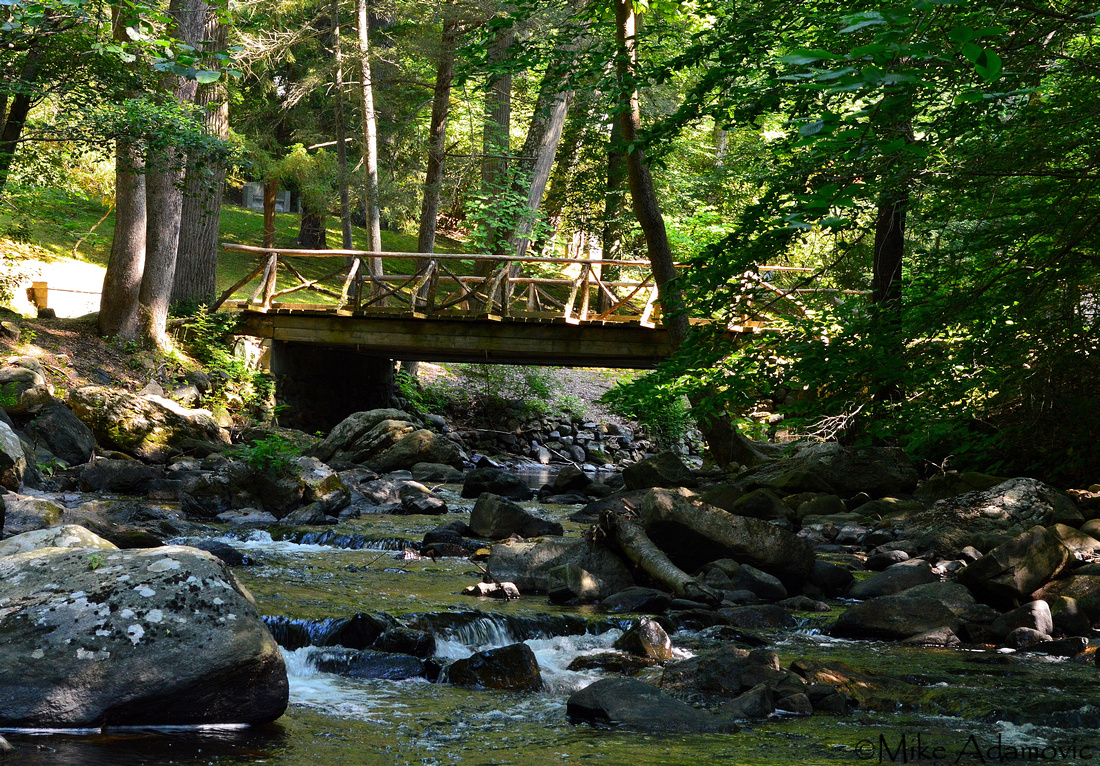

The current 4-lane concrete structure isn’t without legend. According to the author of Chronicles of Tarrytown and Sleepy Hollow, “some untoward influence occasionally manifests itself at the new bridge.” He cites two examples of unwitting pedestrians being grabbed by an invisible force and then dragged across the bridge. One unlucky individual had the misfortune of being “flung over the high parapet into the water of the Pocantico, where he swam for some time, being miraculously unable to find the shore.” Such is the haunted realm of Sleepy Hollow.
The Old Burying Ground and the adjacent Sleepy Hollow Cemetery aren’t as dreary as some would suppose. While they hold the dead, they’re of more use to the living. The gravestones and attractive grounds are a window to the past, a way of remembering our country’s colorful history and traditions in a setting ideal for lively contemplation. Irving first fell under the arresting influences in his childhood: “I have sported within its sacred bounds during the interval of worship; chasing butterflies, plucking wildflowers, or vieing with each other who could leap over the tallest tomb-stones.” The impact of these scenes and youthful experiences were great, inspiring him as an adult to masterfully weave them into his immortal tale. His presence can still be felt here. There’s a bit more life stirring in the Old Yard than meets the eye…
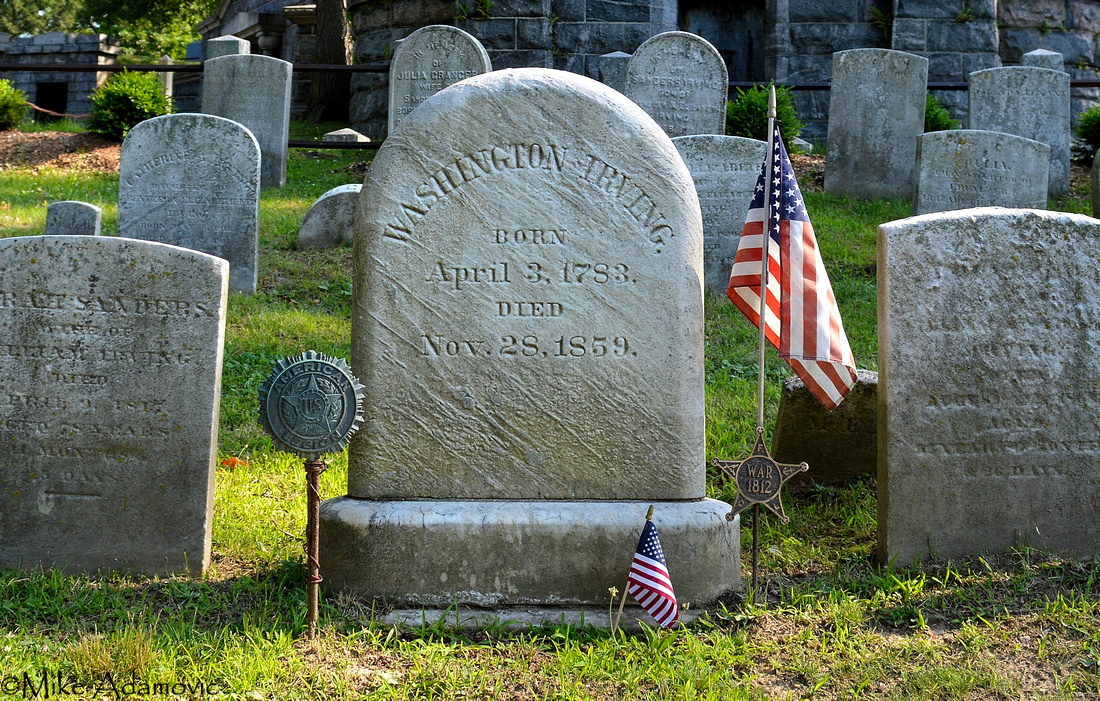



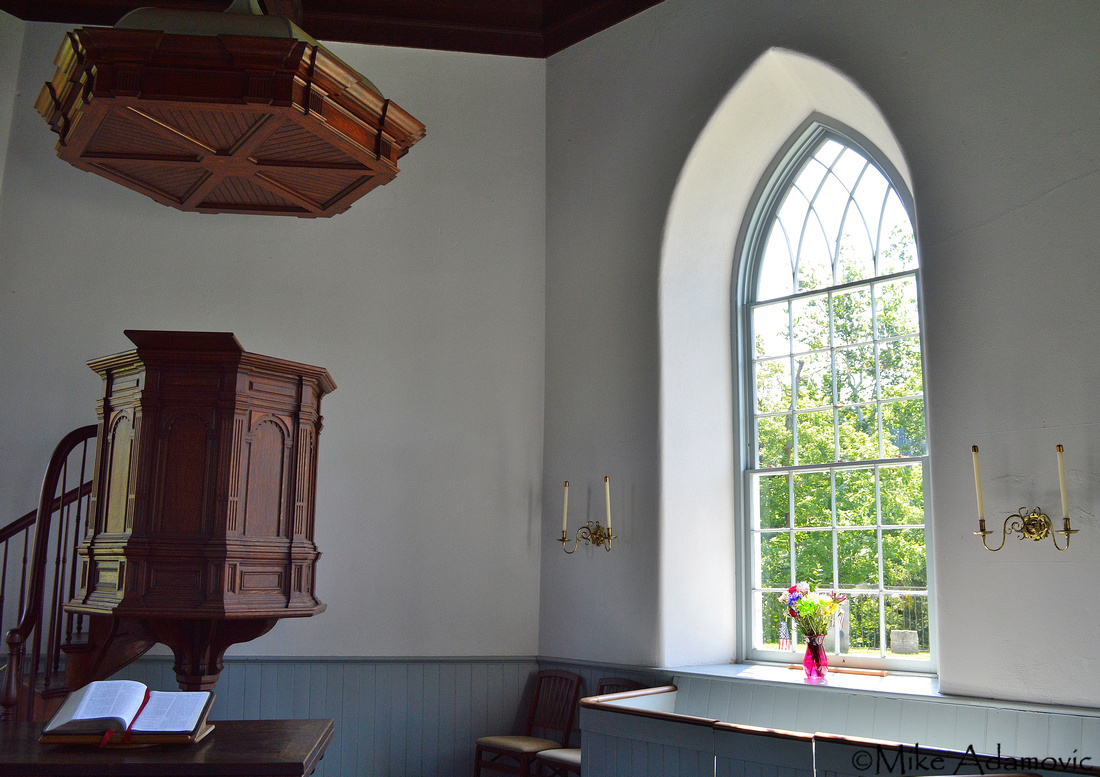



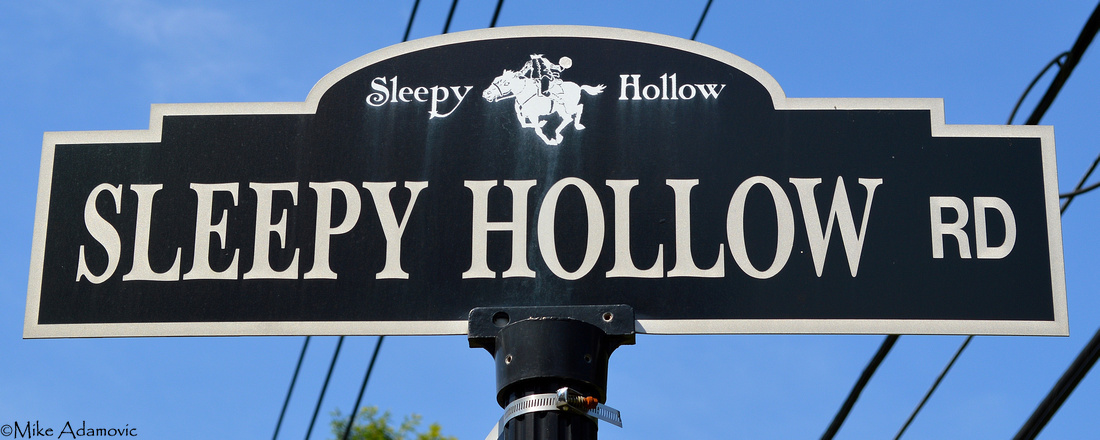

Comments
Jeff
http://www.printradiant.com | http://www.printlinkage.com | http://www.hitsticker.com | http://www.stickermac.com